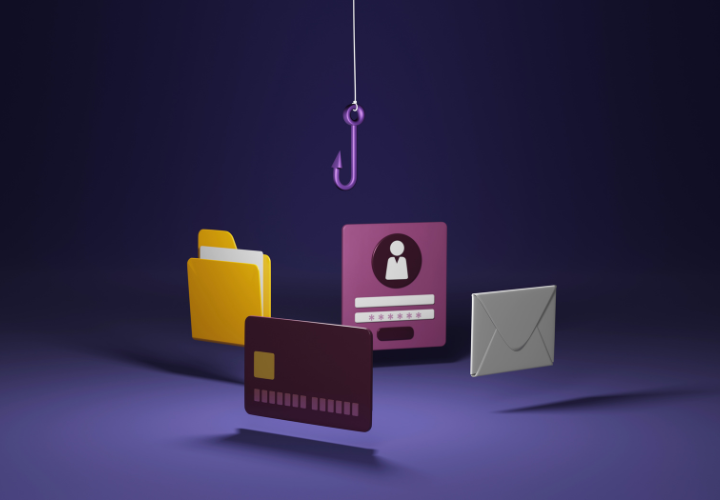Phishing scams are a dangerous hazard that hides beneath the surface of the vast online world. When someone uses the phrase “phishing,” images of fraudulent individuals laying digital traps to deceive unsuspecting people and steal their private data come to mind. These attacks, often presented as phishing scam emails, are cleverly disguised as messages from trusted sources. Their aim is to obtain usernames, passwords, bank account details, credit card numbers, and other sensitive data. Real-world phishing scam examples include emails mimicking banks, government agencies, or tech companies, urging victims to click malicious links or download harmful attachments. In today’s digital world, protecting one’s financial and personal security requires a deep understanding of how phishing scams operate. Proactive phishing scam reporting not only helps contain such threats but also assists cybersecurity teams and authorities in preventing wider damage.
Recognizing the Threat
Phishing scams are a set of fraudulent practices planned for malicious purposes. Fundamentally, the goal of such strategies is to trick people into willingly sharing private information. These scammers use a variety of techniques, taking advantage of flaws in human psychology and communication systems. The following are some of the most common kinds of phishing scams:
- Email Phishing – Phishing is a widely used tactic in which emails are sent out in large numbers pretending to be from reputable companies, luring users to click on harmful links or release personal information.
- Spear Phishing – This focused strategy uses individualized information to raise the chance of success and lend credibility to fraudulent messages that are tailored to certain people or organizations.
- Trap Phishing – Trap phishing encourages people into fraud schemes, such as phony promotions, lottery prizes, or urgent pleas for aid, by using false offers or appeals.
- Whaling – Whaling is a high-stakes variation of phishing that targets CEOs or other persons in positions of authority within companies to obtain critical company information or financial assets.
- Voice Phishing (Vishing) – Vishing is a tactic that uses voice communication channels to trick people into revealing sensitive information over the phone by using live callers or automated voice messages.
- Pharming – This clever tactic uses malware or DNS cache poisoning to divert visitors from trustworthy websites to fraudulent ones to collect sensitive data.
- Evil Twin Attacks – To capture and manipulate users’ data transfers, attackers build rogue Wi-Fi access points that imitate authentic networks in this wireless network fraud technique.
- SMS Phishing – SMS phishing uses text messaging to trick receivers into responding with sensitive information or clicking on malicious websites under the pretense of an urgent alert or promotion.
- Page Hijack Attacks – Page hijackers trick visitors into visiting fake websites intended to spread malware or gather personal data by infiltrating reputable websites.
How to Spot Warning Signs
Phishing scams differ in complexity and competence, but they frequently have characteristics in common that make it easier for users to recognize that they are phony. Among them are:
- Suspicious Sender Addresses – Keep an eye out for email addresses with typos or tiny deviations from reputable domains, since they might be signs of spoofing attempts.
- Urgent or Alarmist Language – Phishing emails often use wording that seems urgent, forcing recipients to take action quickly and without thinking things through.
- Suspicious Links or Attachments – Avoid downloading attachments from unidentified or unreliable sources, and hover over hyperlinks to check the destination URLs before clicking.
Why Reporting Matters
Every person is essential to the fight against phishing scams because they contribute to reducing dangerous circumstances. Informing the appropriate authorities or groups about phishing efforts fulfills many essential functions:
- Prevention and Awareness – Users may become more aware of phishing schemes and be better equipped to identify and steer clear of such risks in the future by reporting them.
- Law Enforcement Action – To disrupt the operations of cyber criminals and discourage future unlawful acts, authorities rely on complaints of phishing attacks for their investigations and prosecutions.
- Protection of Victims – By reporting phishing scams, one may take quick action to lessen the impact on prospective victims, such as banning illegal sites or alerting those who may be at risk.
- Data Analysis and Research – Researchers and cybersecurity specialists may better recognize emerging patterns, improve defensive strategies, and refine detection algorithms with the use of aggregated data from reported phishing occurrences.
Conclusion
Phishing schemes continue to be a persistent problem, preying on unsuspecting people and businesses all over the world. Through education on the many types of scams and proactive steps to identify and report questionable behaviors, users may strengthen their defenses against these online predators. The continuous fight to protect financial and personal security in the digital era requires alertness, education, and group effort as fundamental principles. When we work together, we can successfully negotiate the danger of the internet and avoid falling victim to phishing schemes.
Seek Assistance from Fraud Recovery Experts
If you’ve fallen victim to a phishing scam, don’t panic. Contact Fraud Recovery Experts for professional help in recovering your assets. To assist you in managing the repercussions of fraudulent activity, we provide free consultation and strong assistance.
Visit our Facebook Page

